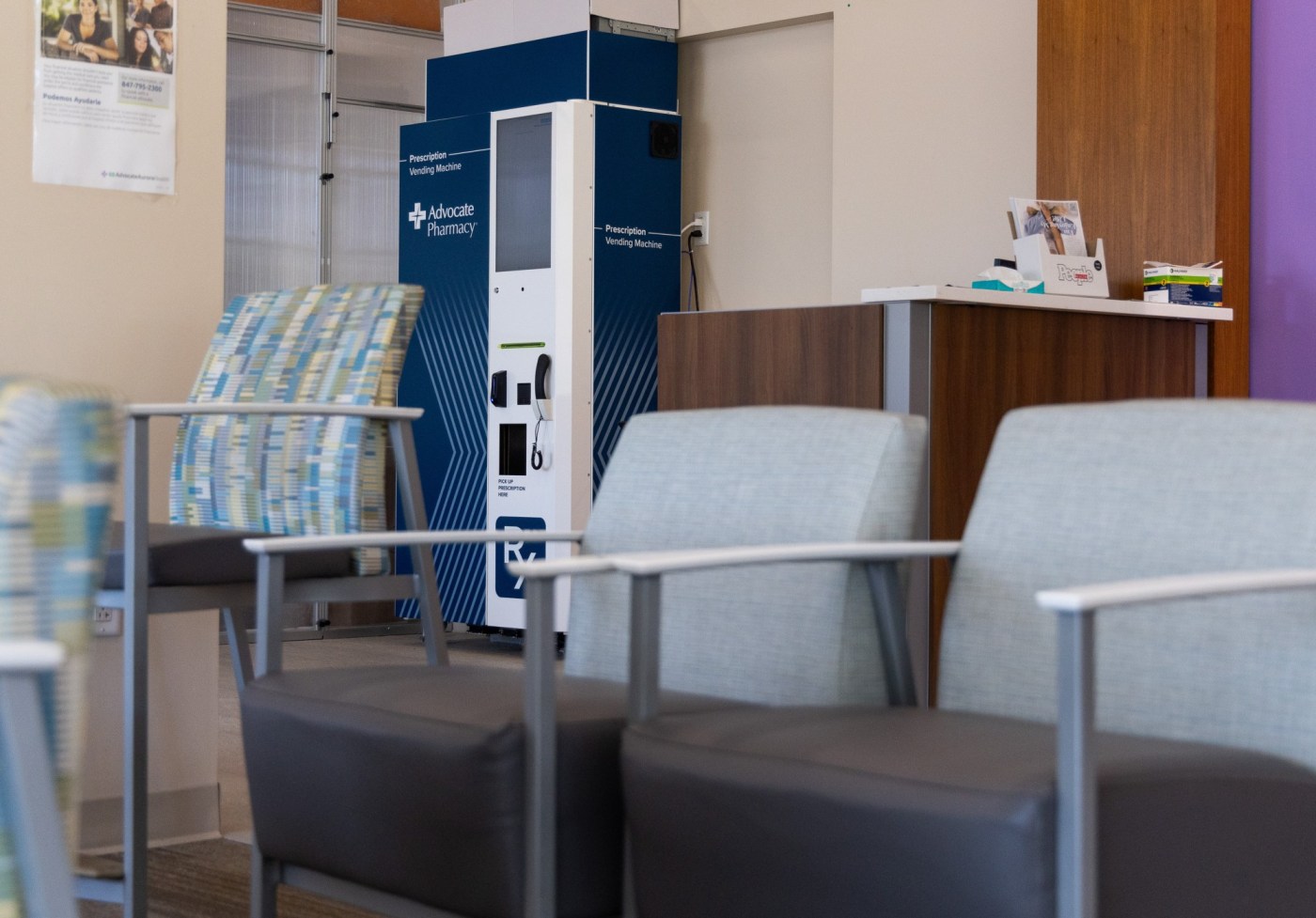In a groundbreaking initiative, Advocate Health Care has introduced vending machines dispensing prescription medications at two locations in Chicago. Located at Advocate Trinity Hospital and Advocate Medical Group’s Imani Village clinic, these machines aim to improve patient access to necessary medications immediately following doctor visits or hospital discharges.
The vending machines offer a range of common medications for various health concerns, including treatments for the flu, bacterial infections, and chronic conditions like heart disease and asthma. Patients can receive their prescriptions without the need to travel to a pharmacy, addressing significant barriers to accessing medications, particularly in areas designated as “pharmacy deserts.”
Michelle Blakely, president of Advocate Trinity and South Suburban hospitals, highlighted that the installation of these machines follows feedback from both patients and medical staff about the challenges many face in obtaining prescriptions. She noted that recent closures of major pharmacy chains, such as Walgreens, have exacerbated these issues, leaving patients with fewer options and longer wait times.
After a consultation, doctors ask patients if they would like to use the vending machine for their prescriptions. If the patient agrees, the doctor sends the prescription to Advocate Health Care’s pharmacy team, which confirms whether the medication is available in the machine. Patients then receive a call or text message regarding their prescription status.
Each machine features a large screen for identity confirmation, and patients can use an attached phone receiver to engage in a video call with a pharmacist should they have questions about their medications. After confirming their identity, patients can pay using a credit card, and the medications are dispensed directly into a pick-up slot.
On a recent occasion, Dr. Julie Taylor, a family medicine physician with Advocate, sent a prescription for an antibiotic to the Imani Village clinic’s vending machine after treating a patient for an infection. Taylor emphasized that utilizing the machines not only saves patients time and transportation costs but also facilitates immediate access to medications that can significantly improve their health outcomes.
Since becoming operational, the two vending machines have dispensed over 35 prescriptions in just a few weeks. Taylor noted, “If it helps them, if it keeps them out of the hospital, it’s a benefit. It saves them time and money and headaches.”
Despite the positive reception, some healthcare professionals express concerns regarding the absence of human pharmacists in this process. Garth Reynolds, executive director of the Illinois Pharmacists Association, acknowledged that while the vending machines offer a solution to pharmacy access issues, having onsite staff is preferable. He remarked, “If we’re trying to be innovative and responsive to costs, we also have to be very careful that we’re not eroding the provider relationship between the patient and pharmacist.”
Reynolds appreciates the provision for patients to communicate with pharmacists via video, yet he stresses the importance of maintaining personal interaction in healthcare settings.
The vending machines are part of Advocate Health Care’s ambitious $1 billion plan to enhance healthcare delivery on the South Side of Chicago. This initiative includes the replacement of Advocate Trinity Hospital with a more modern facility and aims to expand access to primary and specialty care.
In alignment with addressing long-standing health disparities, Advocate’s strategy focuses on preventive care and meeting the needs of communities that have historically faced barriers to healthcare access. A third vending machine is set to be installed at Advocate South Suburban Hospital in Hazel Crest later this year, with additional machines potentially rolled out in other locations in the future.
By leveraging technology in this way, Advocate Health Care aims to ensure that patients can easily obtain their medications, ultimately improving health outcomes and reducing the likelihood of hospital readmissions.
